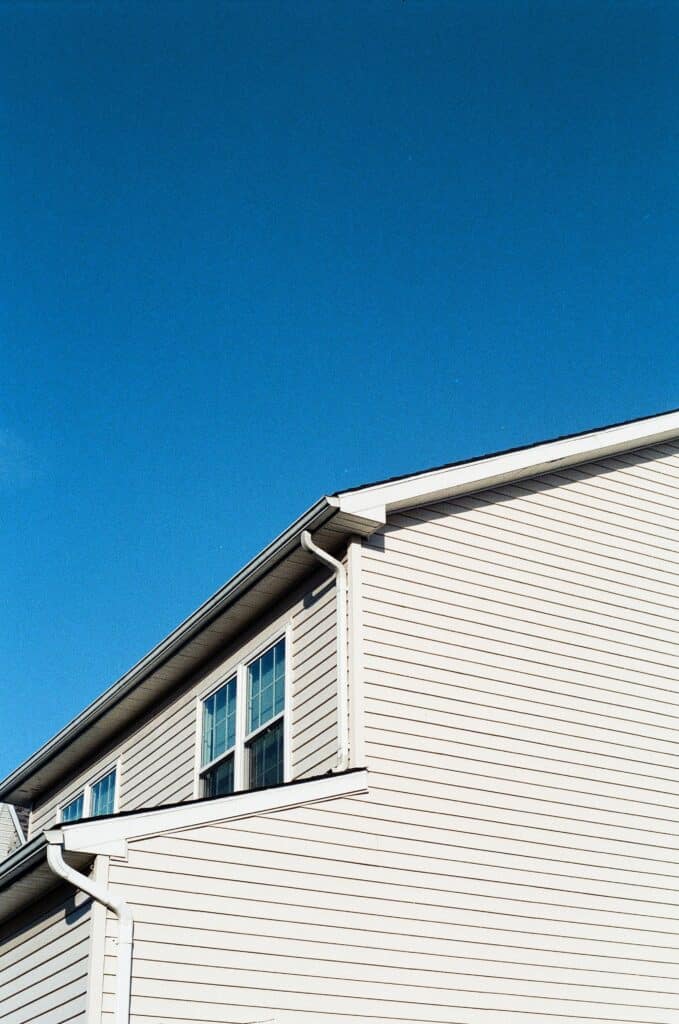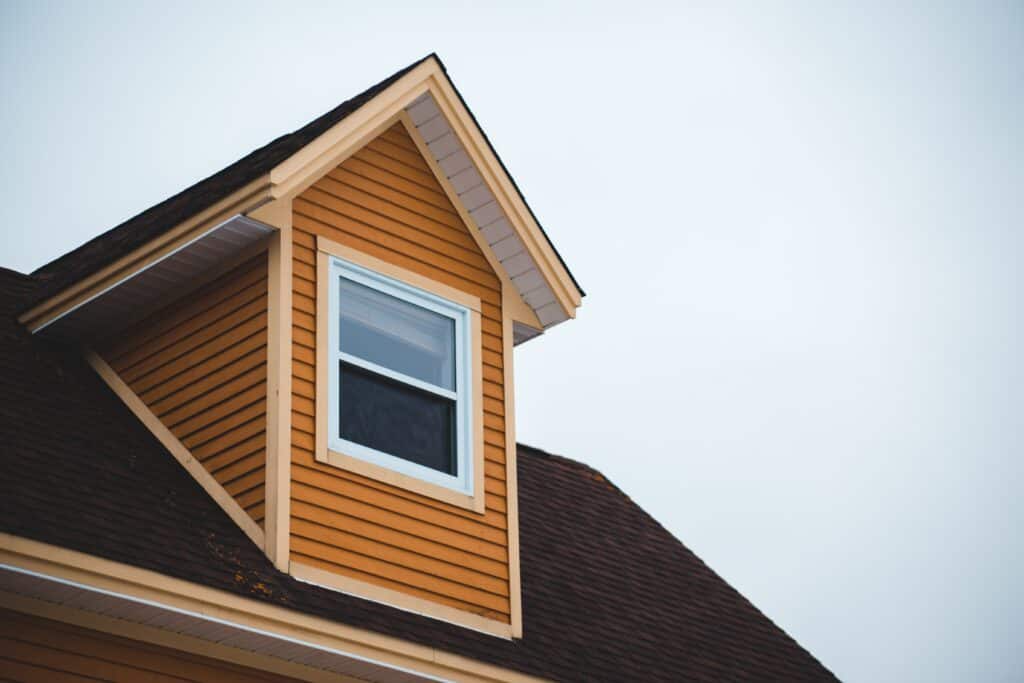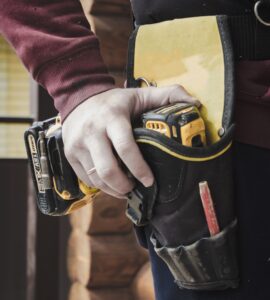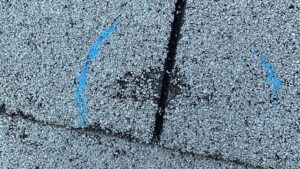There are numerous reasons why vinyl has become the favored choice for homeowners when it comes to siding. One of the main advantages is its wide range of color options, allowing homeowners to find the perfect fit for their home’s exterior and enhance its curb appeal. Additionally, vinyl siding is highly durable and requires minimal upkeep, making it a valuable long-term investment that also offers energy efficiency and eco-friendliness. Furthermore, the affordability of hiring professionals to install vinyl makes it a cost-effective option compared to other materials. However, this does not equate to low quality or cheapness.
What is the cost of a professional vinyl siding installation?
The installation of vinyl siding by a contractor typically ranges from $2.50 to $10.75 per square foot, depending on the type selected. For a 1,000-square-foot residence, the total cost would fall between $2,500 and $10,750. However, for a larger home with 4,000 square feet, the price increases significantly to between $10,000 and $43,000. While there is room for negotiation in these numbers, those seeking to minimize expenses may be dissatisfied with these amounts.
Rest assured, the upfront investment for vinyl siding will typically result in a positive return. However, consider DIY installation as a cost-saving option, provided you have basic carpentry skills. By doing so, you could potentially save 50% of the total cost and have more flexibility in your budget for higher-quality vinyl siding options. That being said, let’s explore some tips on how to successfully install vinyl siding.

Vinyl Siding Installation Tips
By adhering to these suggestions, your do-it-yourself installation of vinyl siding will be a seamless process, resulting in a residence facade and craftsmanship that you can take pride in.
Choose the broader initial strip
Vinyl siding should be properly installed with the starter strip, which should be positioned at least 1 inch below the top of the foundation. This not only safeguards the sheathing from weather elements such as snow and rain, but also deters pests. Keep in mind that starter strips come in two sizes–2.5 inches and 3.5 inches–so it’s best to choose the wider option for a lower starting point for the siding.
Exert an upward force while hammering in the nail
Curious as to why vinyl sidings often fall short? It all comes down to the panels becoming loose and being carried away by powerful winds, ultimately reaching the middle of the road or your neighbor’s yard. To prevent this issue, it is advised to add some upward force when securing the pieces with nails. This technique guarantees that the panels remain secure. However, be mindful not to exert excessive pressure while doing so, as it may result in breaking the nail flange.
Safeguard Your Vinyl Corner Posts Against Pests
Vinyl siding has many benefits for any home. However, it can also attract unwanted guests such as mice, bees, and other critters who may take up residence in your vinyl corner posts. To avoid this, be sure to cap each post before installation to prevent these pests from settling in.
Here is a step-by-step guide on how to accomplish this:
● Shorten the J-channel portion of the post by a few inches.
● Once the remaining flaps have been folded back, simply use your hammer to lightly tap them and create a crease.
● Make sure the flaps are notched to secure a snug fit against the wall.
● Note how posts crack in the cold. So, lay them in the sun or bring them inside your home before partaking in this process if the temperatures are low.
Top J-Channels Should Overlap Side J-Channels
While the top J-channel may not fully prevent rainwater from entering windows and doors, there is a way to avoid this issue with the side J-channels. To ensure their protection, simply create an overlapping flap using the top J-channel.
Hammer in the Fundamentals
If your sheathing is not foam-based, use 2-inch galvanized roofing nails to secure your vinyl siding. Avoid driving the nails in too tight to allow for movement of the panels. This will prevent bubbling in hot temperatures. Make sure to hit each stud, as solely securing to the sheathing may cause nails to loosen due to expansion and contraction of the siding.
Buy a Vinyl-Siding Blade
It is important to have the right tools for certain tasks. For instance, when installing vinyl siding yourself, it is necessary to use a vinyl siding blade. Using a standard wood blade on a circular saw can cause the siding to break, resulting in wasted money and potential hazards. Vinyl siding blades are readily available at most home improvement stores and are reasonably priced. However, even with the correct tool, there is still a chance of chipping while using a siding miter saw. In this case, try carefully pulsing the saw backward through the siding.
Flash Window Bottoms
Prior to attaching the side J-channels, place a section of felt paper flashing at the lower corners of the window. Ensure that the flashing extends over the row of siding directly underneath the window. This will allow any water present in the J-channels to drain out through the designated weep holes located at the top of the siding.
Look Out For Overlaps
In most cases, vinyl siding should have a one-inch overlap between panels as a minimum requirement. To account for changes in temperature, an additional ⅜ inch may be necessary on hotter days to prevent unsightly contraction when the temperature drops. For optimal results, begin installing the siding at the back corner of the house on both sides. This will ensure that any seams are not visible from the street. On the other hand, incorrect lapping can result in a displeasing appearance that detracts from your home’s overall curb appeal. Remember to also overlap seams on the front and back of the house so they cannot be seen from decks, patios, or front doors.
Install Longer Panels First
When installing vinyl siding on both sides of a door or window, start with the side that requires longer panels. Keep in mind that smaller panels have more flexibility than longer ones and may stretch easily. Therefore, it’s important to measure to the top of the window before nailing the last few pieces on the smaller side. This will ensure that both sides are at the same height.

Get More Information from a Professional
You can streamline your DIY process by working in tandem with vinyl siding specialists who can provide expert insights during installations.
Would you like to DIY vinyl siding installation but require specialized guidance? If so, contact Midwest today.





